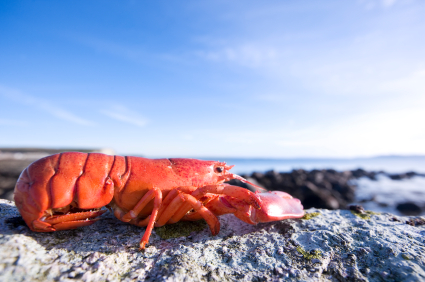by Ben Fuchs
Critical Health News
Shrimp and lobsters make their own anti-inflammatory molecules, and that has scientists very excited. In a press release posted last week by the College of Medicine at Florida Atlantic University, officials announced that they had received a $380,000 National Institute of Health grant to investigate just how the marine medicine could be used to eliminate inflammatory diseases in humans.
The crabby chemical that is the center of attention is called a chitin, and it’s a key constituent of the shells of various oceans animals including crayfish, shrimp, krill, and barnacles, and is one of the most abundant molecules in all of nature, second only to cellulose. And, as it turns out, in addition to being abundant (and cheap), chitin has powerful anti -inflammatory properties. Properties that are so impressive, that the natural molecule found in so many crust critters is being studied in hope of finding a pharmaceutical treatment for inflammatory diseases including Irritable Bowel Syndrome, arthritis, and heart disease.
And it’s not just shellfish that contain this fascinating medicinal molecule. You can find chitin in the hard shells of insects as well as in the cell walls of most fungi and algae.
Chitin is made up of repeating pieces of sugar to which it owes its interesting medicinal properties. Actually the sugar isn’t any old glucose. It’s a “specialty” glucose that scientists call a “proteo-glycan” (protein-sugar) because it has a little chunk of amino acid attached to it. The little proteanaceous piece turns the ordinarily “one trick pony” glucose, which is basically only good as a source of energy, into glucose-amine, a sort of “super” glucose that provides structure and support for everything from bones to butterfly wings and has therapeutic properties to boot. Arthritis sufferers, in particular, have exploited the healing powers of glucosamine for decades.
The glucosamine pieces that make up chitin are a type of glucosamine called NA-glucosamine (NAG). The NA component makes this type of glucosamine especially effective at healing and soothing. This is really what has scientists and drug companies so excited. In addition to NAG’s calming and quenching qualities, it contains the precursors for hyaluronic acid, one of the most important of all growth and repair and anti-inflammatory molecules in the body. NAG is especially effective at helping to take the edge off of intestinal pain and discomfort associated with various digestive ailments.
If you don’t to wait for some drug company to patent a molecule and sell it to you for 20 dollars a dose to enjoy the benefits of crustacean chitin, use glucosamine supplements. If you’re looking to heal the gut get some NAG. They’re available in health food stores or on the internet, very inexpensive, and both are completely non-toxic.
Food can be an especially good source of NAG, especially homemade chicken soup. The knobby cartilage on chicken bones is a great source of NAG as well as other substances like amino acids, chondroitin, and collagen that can all contribute joint health benefits. You can save shrimp shells and throw put in a tea ball and let them steep in the soup. Make sure you throw in some lime or lemon; a little acid is required to dissolve the NAG into the soup. Aloe is also a good source of NAG, as is Noni. Algaes, a great source of everything good and healthy, also contain appreciable amounts of NAG.



